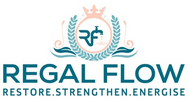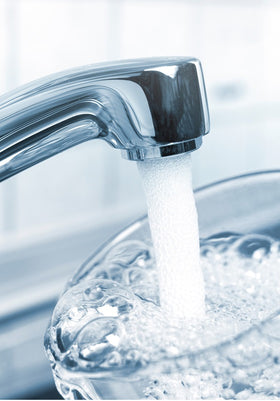
Reverse Osmosis in Chemistry: Unlocking the Science Behind Water Purification and More
Ever wondered how we turn salty seawater into refreshing drinking water? Enter reverse osmosis in chemistry—a process that uses pressure and special membranes to filter out impurities. From countertop dispensers to massive desalination plants, it’s a game-changer. Exploring Reverse Osmosis: Detailed Analyses and Practical Uses shows how this science works wonders in everyday life!
The Chemical Principles of Reverse Osmosis
Osmosis and Reverse Osmosis Defined
To understand reverse osmosis, we need to start with osmosis—the natural process where water moves through a membrane from an area of low solute concentration to an area of high solute concentration. Think of it as nature's way of balancing things out. Now, reverse osmosis turns this process upside down. By applying pressure, we force water to move in the opposite direction, pushing it through a special membrane. This is where the magic happens—impurities like salts, bacteria, and contaminants get trapped, leaving behind pure water. It's a clever twist on a natural process that has become essential in water treatment.
Membrane Chemistry and Selectivity
The real genius behind reverse osmosis lies in the membrane. Picture it as a highly selective sieve. These membranes are made from thin polymer layers with tiny pores—so small, in fact, that they allow water molecules to pass through while blocking larger particles like salts and pollutants. The chemistry of these membranes is what makes them so effective. The material is designed to be tough yet flexible, ensuring the membrane can filter out a range of impurities without breaking down. With such precision, reverse osmosis can deliver highly purified water, whether it’s for drinking, laboratory experiments, or industrial processes.
Applications of RO in Chemical Processes
Water Purification in Laboratories
Reverse osmosis is an unsung hero in laboratories. Imagine a scientist trying to conduct an experiment and their water supply is contaminated with minerals or bacteria. This could ruin the results and compromise months of hard work. Enter RO, which removes all those impurities, providing the purest water for critical chemical reactions and analysis. In fact, many labs rely on reverse osmosis to produce ultra-pure water that meets strict standards. Whether it’s for testing chemical compounds or preparing samples, RO ensures the water is clean and safe, so experiments stay on track.
Separation and Concentration of Solutions
Reverse osmosis is also a secret weapon when it comes to separating and concentrating chemical solutions. For example, in the food industry, manufacturers use RO to concentrate fruit juices, removing excess water without losing flavour or nutrients. Similarly, pharmaceutical companies rely on RO to concentrate ingredients, making their products more potent. By applying pressure to a solution, RO selectively removes water, leaving behind the concentrated solutes. This makes it a powerful tool for industries that need precise control over the composition of their products.
Industrial Chemical Processing
In the world of industrial chemical processing, reverse osmosis is indispensable. It’s used to treat water in power plants, for brine management in desalination plants, and even in the purification of chemicals for use in manufacturing. One of the key advantages of RO is its ability to remove unwanted contaminants from water or chemical solutions without the need for complicated chemical treatments. This makes it an efficient, cost-effective option for industries that require high-quality water or chemicals.
Chemical Factors Affecting RO Performance
pH and Temperature Effects
When it comes to reverse osmosis, the pH and temperature of the water can play a huge role in how well the system works. For example, if the water is too acidic or too alkaline, it can affect the structure of the membrane and reduce its efficiency. Similarly, temperature affects how easily water flows through the membrane—warmer water tends to pass through more quickly, while colder water is more viscous and moves slower. Understanding these factors is crucial for optimising RO systems. By adjusting the pH or temperature of the water, you can ensure the membrane operates at its best, resulting in cleaner, more efficient water purification.
Chemical Compatibility of Membranes
Not all membranes are created equal. Some membranes can break down when exposed to certain chemicals or solvents. This is why selecting the right membrane for the job is essential. It needs to be chemically resistant to the substances it will be filtering out. For example, in the pharmaceutical or food industries, where certain chemicals may be present, a more robust membrane is needed. By ensuring that the membrane can withstand exposure to a wide range of substances, reverse osmosis systems can work reliably in a variety of chemical environments.
Analytical and Research Uses of RO
Sample Preparation
In the world of chemical analysis, precision is everything. Reverse osmosis plays a vital role in sample preparation by removing any contaminants that could skew the results. Whether it’s water, solvents, or other chemical solutions, RO ensures that only the purest substances are used in the analysis, leading to more accurate and reliable results. For example, in environmental testing, reverse osmosis is used to purify water samples before testing for pollutants. This ensures that the water being analysed hasn’t already been contaminated by the testing process itself.
Chemical Analysis
Chemical analysis often requires the use of ultra-pure water, and reverse osmosis is the best way to get it. For techniques like chromatography or spectroscopy, the water used must be free from any impurities that could affect the results. Reverse osmosis delivers just that, providing a reliable and cost-effective solution for laboratories needing consistent, high-quality water. Without reverse osmosis, the risk of contamination in chemical analysis would increase, leading to less reliable results. With it, scientists can be confident that their analyses are based on the purest possible substances.
Conclusion: RO's Role in Chemical Science
Summarising Key Chemical Applications
Reverse osmosis is much more than just a water purification method; it’s a critical part of many chemical processes. From providing ultra-pure water for laboratories to concentrating solutions in the food and pharmaceutical industries, RO plays a crucial role in ensuring the quality and efficiency of a range of applications. It’s also vital in industrial chemical processing, where it removes contaminants from water and chemicals, helping to keep operations running smoothly. Reverse osmosis truly is a jack-of-all-trades in the world of chemical science.
Future Directions in RO Research
Looking ahead, the future of reverse osmosis is bright. Ongoing research is focused on making membranes more durable, energy-efficient, and resistant to fouling. These improvements could make RO systems even more affordable and sustainable, helping to provide clean water in areas facing water scarcity or pollution. As technology advances, reverse osmosis could become even more efficient, opening the door to new possibilities in water treatment and chemical processing. With research pushing the boundaries of what’s possible, reverse osmosis will continue to be a game-changer in chemical science for years to come.
More Reverse Osmosis info we think you'll love
Is Reverse Osmosis Water Chlorine Free?
Is Reverse Osmosis Water the Best?
Is Reverse Osmosis Good for Well Water?
Can Reverse Osmosis Remove Lead?
Can Reverse Osmosis Remove PFAS?
Can Reverse Osmosis Remove Salt?
Is a Reverse Osmosis System Needed for Window Cleaning?
Does Reverse Osmosis Remove Viruses from Water? Understanding the Filtration Process
How do I Maintain my Reverse Osmosis System for Longevity and Performance?
Is Reverse Osmosis Water Good for Coffee? Exploring Water Quality for the Perfect Brew
Reverse Osmosis vs. Carbon Filters for Well Water: Which is Best for Your Needs?



Leave a comment